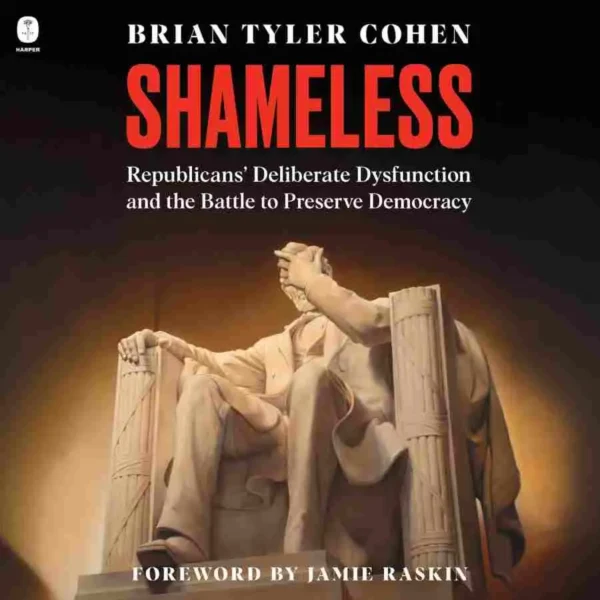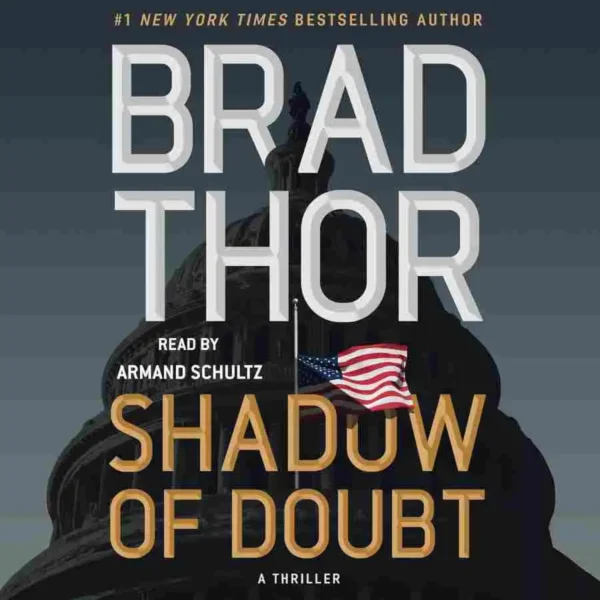
I discovered the audiobook “Unhumans” by Jack Posobiec and Joshua Lisec while skimming through my current Audible suggestions. As a fan of political literature and historical analysis, I was fascinated by the book’s idea. This was not my first encounter with the writings of these writers, nor will it be my last. My reading path has brought me through countless books on political strategy and historical upheavals, but “Unhumans” offered a fresh viewpoint, combining historical occurrences with a tactical examination of contemporary social disturbances.
Overview
“Unhumans: The Secret History of Communist Revolutions (and How to Crush Them)” examines the trends and strategies used in far-left upheavals over the last 250 years. The book is co-written by Jack Posobiec, a former Navy intelligence officer and senior editor at Human Events, and Joshua Lisec, a best-selling ghostwriter renowned for working with controversial personalities.
The book is organized as a historical trip, studying different communist revolutions and establishing connections with current events. Posobiec and Lisec suggest that knowing past patterns is critical for detecting and resisting current methods. The book offers itself not as a political or ideological discourse, but as a practical guide to spotting and countering what the authors refer to as a “gray-zone communist revolution.”
Summary
Historical Context and Analysis
The book starts by tracing the beginnings of communist revolutions, beginning with the French Revolution and on to major events such as the Bolshevik Revolution, Mao Zedong’s ascendancy in China, and numerous other far-left groups. Each chapter examines these events, concentrating on the tactics used by revolutionaries to destabilize and capture control of societies.
Posobiec and Lisec underline the cyclical character of these upheavals, underlining how each revolution followed a similar path: from early cries for change to the violent removal of old systems, to the formation of a new order typified by purges and authoritarian rule. The authors argue that historical knowledge is critical for detecting and resisting similar trends in the current day.
The French Revolution
The French Revolution serves as the basis for Posobiec and Lisec’s study. They dive into how revolutionaries used economic hardship and social dissatisfaction to ignite widespread revolt. The writers trace the events from the storming of the Bastille to the Reign of Terror, noting similarities with the use of media and propaganda in current upheavals.
The Bolshevik Revolution
Moving on to the Bolshevik Revolution, Posobiec and Lisec explore Lenin’s deliberate use of the Soviets to destroy the temporary government. They emphasize the roles of prominent leaders and the use of popular slogans such as “Peace, Land, and Bread” to attract support. The authors underline the necessity of knowing these strategies in order to identify comparable tendencies today.
Mao’s China
The examination of Mao’s ascent to power in China concentrates on the Long March and the use of guerilla tactics to outmanoeuvre the Nationalists. Posobiec and Lisec investigate how Mao’s strategic ties and ideological indoctrination led to his ultimate dominance of China. They find parallels between the ways current movements use ideological indoctrination and grassroots organizing.
Contemporary Parallels
One of the most notable parts of “Unhumans” is its attempt to establish connections between past communist methods and contemporary political and social movements. The writers contend that current developments in the United States and other Western nations have commonalities with previous revolutions. They talk on how modern activists use media, education systems, and legal processes to further their causes, often at the price of established values and institutions.
Media manipulation
Posobiec and Lisec describe how contemporary activists utilize media to influence public perception and narratives. They relate this to historical propaganda, demonstrating how both strive to create an atmosphere in which dissent is suppressed and resistance is stigmatized. The authors contend that knowing these methods is critical to sustaining a free and open society.
Educational Systems
The book also delves into the importance of educational systems in revolutionary revolutions. Posobiec and Lisec examine how ideological indoctrination in schools and colleges helps to shape a generation of activists. They draw similarities with Mao’s cultural revolution, in which education was a critical battlefield for imparting communist ideas.
Legal Mechanisms
The authors’ study also includes an emphasis on legal procedures. They investigate how contemporary movements employ lawfare, or the strategic use of legal institutions, to achieve their objectives while suppressing resistance. The book draws parallels with historical events, such as the employment of revolutionary courts during the French Revolution and the purges in Soviet Russia.
Tactical Guide to Resistance
Beyond historical study, “Unhumans” presents itself as a roadmap for fighting these approaches. Posobiec and Lisec describe what they feel are viable techniques for opposing revolutionary movements, building on personal experience and historical analogies. This includes strategies for increasing awareness, fostering resilient communities, and successfully combating misinformation.
Raising Awareness
The writers emphasize the need of developing knowledge about the tactics and methods used by revolutionary groups. They contend that educating the public about historical patterns and present connections is the first step in countering these movements. This entails not just disseminating knowledge, but also encouraging critical thinking and skepticism of one-sided stories.
Creating Resilient Communities
Building resilient communities is another important method highlighted in the book. Posobiec and Lisec talk on the necessity of building strong local networks that can provide assistance and solidarity during times of distress. They use historical instances of communal resilience, such as the Polish resistance during World War II, to support their claims.
Countering Propaganda
Posobiec and Lisec argue that effective counter-propaganda is vital for opposing revolutionary movements. They provide instances of effective counter-propaganda campaigns, such as the employment of underground media in Eastern Europe during the Cold War. The authors suggest that although contemporary technology provides new potential for opposing propaganda, it also introduces new obstacles that must be handled.
Characters & Perspectives
While “Unhumans” is mostly a nonfiction examination, it introduces readers to a number of historical personalities whose acts and choices influenced the trajectory of many revolutions. From well-known figures such as Lenin and Mao to lesser-known agitators and influencers, the book delves into the characters behind movements.
The opinions of Posobiec and Lisec are equally important to the story. Their experiences in intelligence and ghostwriting provide a unique perspective on the analysis, combining factual reporting with a strong sense of story and persuasion. This combination makes “Unhumans” an educational and entertaining read.
Jack Posobiec
Jack Posobiec’s background as a Navy intelligence officer informs the study, providing insights into the strategic and tactical components of revolutionary movements. His intelligence experience gives him a unique insight on how information and disinformation influence public perception and political results.
Joshua Lisec
Joshua Lisec’s experience with ghostwriting and narrative composition provides additional element to the book’s study. His ability to collect and communicate complicated concepts in an interesting way makes historical and current analysis accessible to a wide range of audiences. Lisec’s emphasis on narrative underscores the significance of storytelling in both revolutionary movements and resistance operations.
Plot spoilers
Given that “Unhumans” is a nonfiction book, the idea of spoilers differs from that of a novel. However, for individuals who want to investigate the book’s arguments and conclusions on their own, the following section contains some of the important takeaways:
- Revolutionary Blueprint: Posobiec and Lisec contend that all far-left revolutions follow a similar pattern, beginning with a cry for change and culminating in authoritarian authority.
- Modern Applications: The writers make clear comparisons between past revolutions and present events, implying that the methods utilized by activists today are based on the same revolutionary playbook.
- Resistance methods: The book finishes with a thorough guide on recognizing and resisting these methods, stressing the value of awareness, community, and smart countermeasures.
Comparison of Similar Works
“Unhumans” reminded me of “The Devil and Karl Marx” by Paul Kengor, which I just reviewed. Both works examine communist beliefs and their influence on society, but Kengor’s work concentrates on philosophical and spiritual components, whilst Posobiec and Lisec’s analyses are more practical and strategic.
Paul Kengor’s “The Devil and Karl Marx”
In “The Devil and Karl Marx,” Kengor investigates the logical and spiritual foundations of Marxist doctrine, as well as its impact on current leftist groups. While Kengor’s work goes deeply into ideological issues, “Unhumans” concentrates on the tactical and operational techniques used by revolutionary groups. Both volumes complement one another, providing a thorough knowledge of the issues faced by far-left beliefs.
Jack Posobiec’s “4D Warfare: A Doctrine for a New Era of Politics”
Similarly, Posobiec’s “4D Warfare: A Doctrine for a New Era of Politics” comes to mind. Both works analyze current political combat, but “Unhumans” takes a more historical perspective. “4D Warfare” gives a larger framework for analyzing contemporary political strife, while “Unhumans” focuses on revolutionary tactics and methods.
Conclusion:
“Unhumans” by Jack Posobiec and Joshua Lisec is an engaging and thought-provoking book that provides a unique combination of historical analysis and tactical instruction. Whether you’re a history buff, a political addict, or just interested in current events, this book offers significant insights on the tendencies of revolutionary movements and the measures required to fight them.


